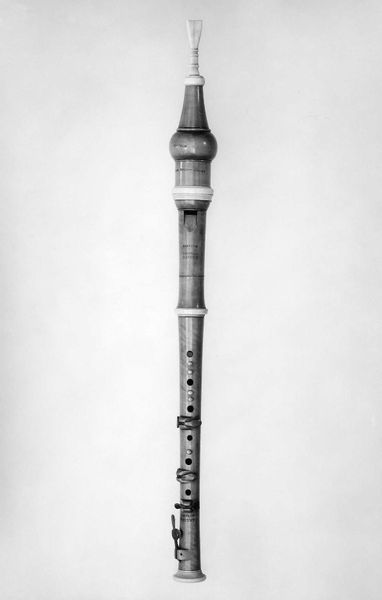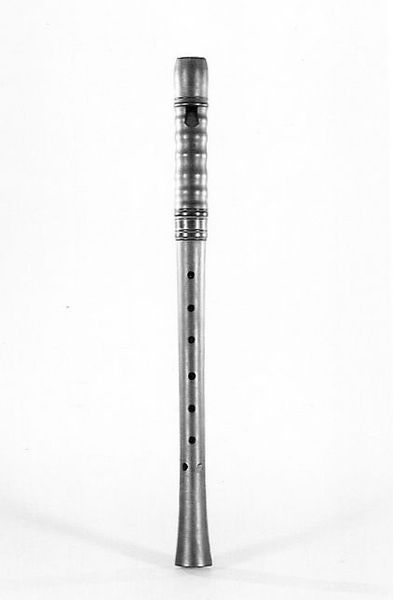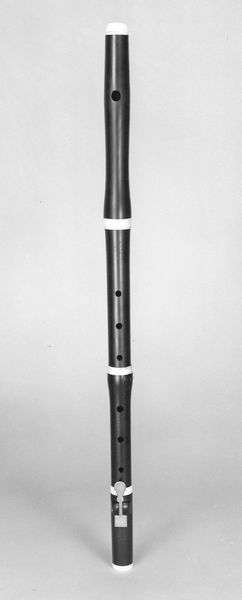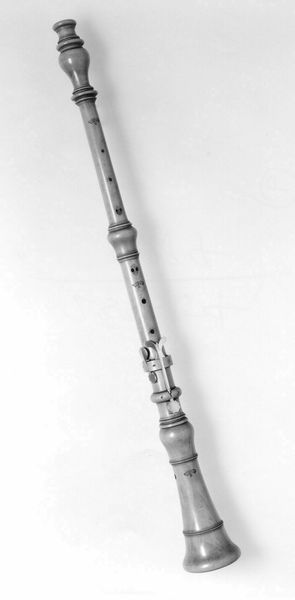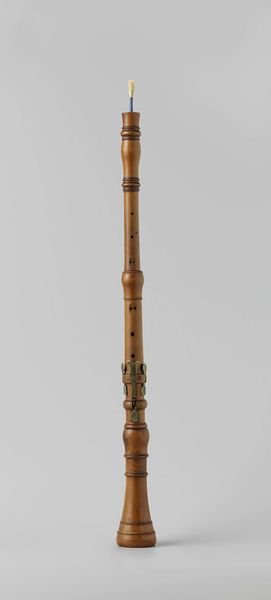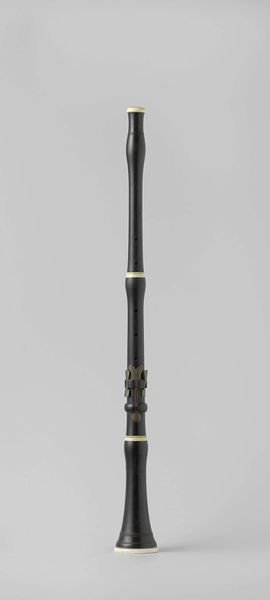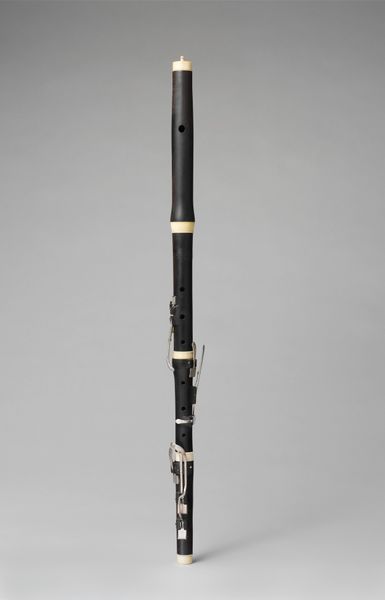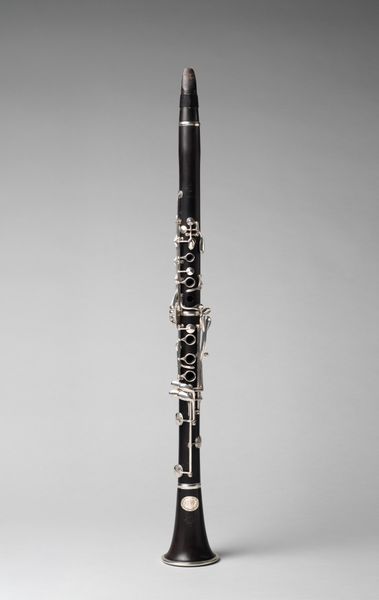
Dimensions: L. 574 mm., Diam. of bell, 67 mm., L. of tube 574 mm. Upper section: 238 mm. Lower section: 236 mm Foot: 150 mm.
Copyright: Public Domain
Editor: So this is "Oboe in C," dating from around 1780 to 1820. It's currently housed at the Met. I find its presentation so stark – this lone wooden instrument rendered in black and white. What strikes you most about this piece? Curator: I'm drawn to the labor embedded within its very construction. Think of the careful selection and crafting of the wood, the shaping and tuning, and then the system of keys and how they act together. These weren't just built, they were engineered! Editor: So you're thinking less about the music it might have produced and more about the maker? Curator: Precisely! What kind of workshop did this come from? Was it mass-produced, or a custom piece for a wealthy patron? The white bands dividing up the segments seem very carefully positioned...how would its original audience perceive its design in contrast to previous wind instruments, and what are the marker of its new cultural value as its time period moved forward? Editor: That's interesting, because my initial thought was just about its musicality, but now I'm picturing the hands that meticulously created it. Were there similar instruments being produced at the time? Curator: Definitely. The late 18th and early 19th centuries saw an explosion of instrument making, largely fueled by increasing demand from both aristocratic and burgeoning middle-class audiences. What kind of economic system allowed a market to form and sustain this kind of craftwork? Editor: So its value isn't just artistic, but also as a representation of the period's industrial capabilities, in a sense? Curator: Exactly! By examining the materials and their assembly, we gain insight into the economic and social structures that enabled its creation and influenced its use and reception. Editor: I never would have thought of an oboe as being tied to material conditions like that. Thank you! Curator: My pleasure. It highlights how something seemingly straightforward is interwoven with so much cultural and economic context, and understanding this piece reveals not just skill in construction, but historical perspective on material conditions as well.
Comments
No comments
Be the first to comment and join the conversation on the ultimate creative platform.
